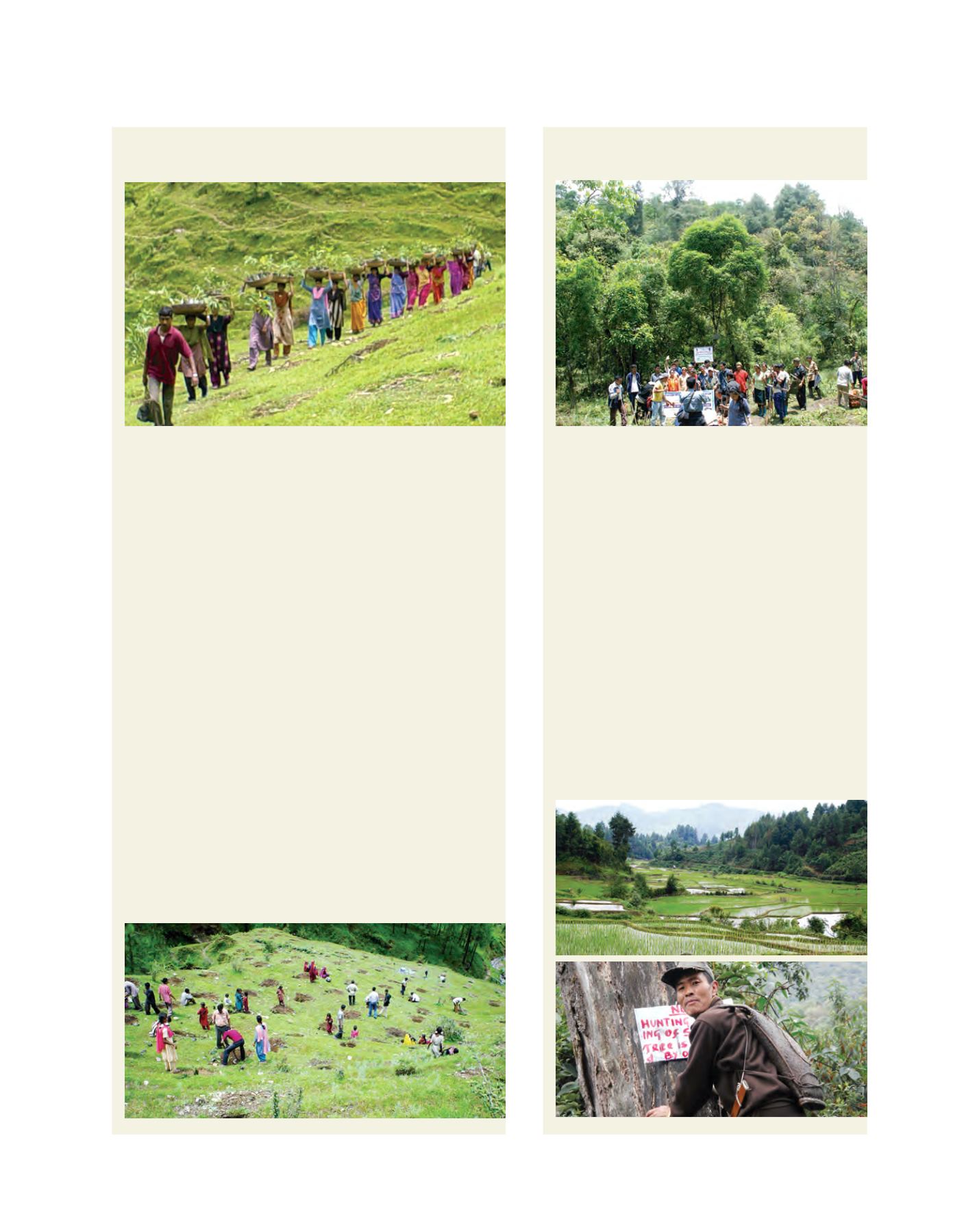

[
] 230
Afforestation of community degraded land for livelihood
enhancement in Arah village
Community conserved areas:
A mechanism for biodiversity conservation
The western Himalayan ecoregion of India contributes significantly
towards the regulation of hydrological processes in the surrounding area,
which faces serious environmental threats due to depletion of natural
resources. The mostly agrarian inhabitants have small and fragmented
land holdings and poor access to infrastructure and technological know-
how. Afforestation of degraded lands with community participation can
help arrest the ongoing process of resource degradation. In 1992 in the
remote village of Arah, a project was launched that combined a practical
mix of both traditional and scientific knowledge, resulting in improved
livelihood options and better management of natural resources.
Land in the village had been abandoned as it became economically
unviable to cultivate and as a result, the area had become an open
grazing area. The Van (forest) Panchayat approached the Institute
requesting rehabilitation of community land. A detailed proposal was
developed and activity-based land consolidation and subsequent
community-based development took place for the first time in the region.
The project focused on the introduction of various multipurpose plants,
including nitrogen-fixing species, to ensure long-term benefits. Activities
like protected cultivation, introduction of nutritious fodder grasses, water
harvesting, small scale fish farming, introduction of high yielding crop
varieties and nursery development were also initiated, aimed at providing
short-term benefits to encourage the participation of villagers. Meetings
and training camps were organized for all stakeholders on appropriate
technologies and new approaches.
This was the first project in the village requiring active participation of
the villagers, and the project team used participatory activities such as
video shows and tutoring of schoolchildren to encourage involvement
among the local stakeholders. The project overcame cultural barriers
around planting bamboo, linked to its association in Hindu culture with
death rituals.
Soil loss was reduced by over 60 per cent within 12 years of the post-
initiation period, due to a complete check on open grazing. The amount
of grass and green leaves harvested increased dramatically. As a result,
most of the families could save money, leading to a gradual reduction in
women’s workload in particular.
As a part of a project aimed at securing biodiversity
conservation through community based natural resource
management, a team from Itanagar engaged with local
communities to conserve the rich biodiversity of the state
of Arunachal Pradesh. Local biodiversity management
committees and community conserved areas (CCAs) were
set up in local villages. The CCAs promoted conservation
of ecologically and socially valued wild and native flora
in the state, which is home to 26 major and more than
110 minor tribal communities. They also operated as
community based platforms, to prohibit hunting and
illegal fishing, to obtain sustained supplies of goods and
services from the conserved ecosystem and to sustain
religious, social and cultural identity. Apatani plateau
has been proposed as a Globally Important Agricultural
Heritage Site because of its unique traditional practice of
rice-cum-fish cultivation. The Village Biodiversity Register
maintained by the villagers includes 40 identified species
of plants and 10 species of animals
The creation of the CCAs has led to improved
conservation of forests, along with enhanced flow of
associated environmental services, reduced hunting, and
better livelihoods for local communities through the sale
of traditional medicines and wild edibles. The conservation
conscious villagers patrol their CCAs to deter illegal
poaching, hunting and felling of trees.
















